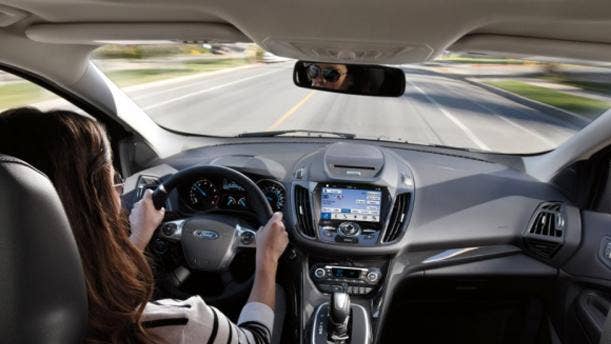8 Things You Need To Know About The $1.4B BlackBerry-Cylance Deal
Here's a look at ten of the biggest reasons BlackBerry and Cylance came together to form a $1 billion software and services firm with deep expertise in cybersecurity.

Joined At The Altar
The first major next-generation endpoint security vendor to be acquired wasn't scooped up by a private equity firm or legacy anti-virus company, but rather a once-prominent smartphone and tablet manufacturer that's trying to reinvent itself in the Enterprise of Things and embedded systems spaces.
Waterloo, Ontario-based BlackBerry announced plans Friday to purchase 900-person Cylance for $1.4 billion just five months after the Irvine, Calif.-based cybersecurity startup hauled in $120 million of Series E funding.
The deal interrupted Cylance's plan to pursue an IPO, and instead means the company will operate as a standalone division attempting to bring prevention of known and unknown threats on the endpoints into non-conventional settings such as autonomous vehicles.
From technology synergies to Cylance's growth trajectory to the impact on channel partners, here's a look at the 10 most interesting components of the BlackBerry-Cylance deal.

8. This Is The Biggest Acquisition In BlackBerry's History
BlackBerry has made 30 acquisitions in its nearly 35-history, but none have been as large as its $1.4 billion purchase of next-generation endpoint security vendor Cylance, according to John Chen, the company's executive chairman and CEO.
This is BlackBerry's first deal in more than 2.5 years. The technology vendor's last deal was back in February 2016, when it acquired U.K.-based cybersecurity consultancy Encription for an undisclosed amount.

7. Cylance Has Been Growing At More than 90 Percent Annually
BlackBerry is excited about both the short-term and long-term financial return potential that the Cylance acquisition provides, according to Steve Capelli, the company's chief financial officer and chief operating officer. Cylance recorded $130 million in annual sales in the company's most recent fiscal year ending in April 2018, representing a year-over-year growth rate of 10 percent.
BlackBerry declined to comment on Cylance's revenue projection for the coming year, but said it's forward-looking expectation is that the $1.4 billion purchase price is less than seven times Cylance's annual revenue. A seventh of BlackBerry's purchase price would be $200 million, or some 54 percent higher than Cylance's sales in its current fiscal year.
The acquisition is expected to be accretive within a year, and capable of generating cash in short order, Chen said.

6. Cylance Ditched The Signature To Be More Predictive
Cylance's mathematical approach is truly different than the signature-based technologies used by others in the industry, and allows the company to identify attacks long before they start and prevent unknown unknowns, according to Stuart McClure (pictured), Cylance's co-founder, chairman and CEO.
Signatures can just detect threat vectors that are already known, McClure said, meaning that the only way to be predictive and see attacks that aren’t already known about is with artificial intelligence and machine learning.
The company trains its computer across millions of files and attack behaviors to figure out the DNA of the attack. Cylance relies on its technology to process the massive amounts of data, McClure said, while the humans intervene in complex, zero-day situations that get past the artificial intelligence engine to better understand what features the machines need to be trained on going forward.

5. The Two Companies Focus On Different Verticals, Device Types
BlackBerry and Cylance have had different vertical focuses to date, Chen said, with Cylance taking on the manufacturing, technology and industrial sectors while BlackBerry focuses on the financial, government, legal and transportation verticals.
And while BlackBerry has been more focused on mobile devices and applications, Chen said Cylance's security tools have to date been applied primarily to stationary devices such as PCs, routers and laptops. As a mobile-first company, Chen said BlackBerry's engineers need to adapt Cylance's technology to address connectivity within the mobile platform.

4. Cylance Offers Advantages Over Both Traditional, Emerging Endpoint Vendors
Classic anti-virus companies were very powerful in the past, but McClure said the signature-based approach can no longer keep up with the sheer volume and complexity of today's attacks.
Next-generation, agentless approaches perform orders of magnitude better in predicting both known and unknown threats to endpoints from both an efficacy, simplicity and performance perspective, McClure said.
And unlike some of Cylance's peers in the next-generation endpoint security space, McClure said the company is able to truly replace anti-virus completely on the endpoint. Competitors often require the existing anti-virus tool to stay on the box, according to McClure.

3. Cylance's Tool Can Operate Without An Internet Connection
Cylance is one of the only endpoint security tools that work even if the device is disconnected from the internet, McClure said, allowing the company to better support fixed devices in the industrial control systems (ICS) and Industrial Internet of Things (IIoT) space.
The company's ability to deliver complete functionality in a disconnected mode and operate completely autonomously of the client makes Cylance an appealing choice to customers in the oil and gas, power or water verticals, according to McClure.
Since the technology is completely autonomous to the client and connection, McClure said it can be installed at an offshore oil rig without taking up too much bandwidth. The tool is lightweight to the point where it's practically invisible on embedded endpoints, McClure said.

2. Cylance Will Give BlackBerry A Leg Up Around Autonomous Vehicles
Cylance has always enjoyed some traction in the embedded systems space, and now expects to get to lower levels of the stack in the self-driving or autonomous vehicle world, according to McClure.
Although it's simply impossible to move signature-based technologies onto the chip, McClure said Cylance is rooted in mathematics and therefore works perfectly well at the chip level.
BlackBerry's technology is embedded in 120 million cars today, Chen said, primarily leveraging the QNX real-time operating system for the embedded systems market. The company will introduce its Unified Endpoint Management (UEM) capabilities and Cylance into the space, according to Chen.

1. Buying Cylance Will Deepen BlackBerry's Use Of The Channel
BlackBerry has been enhancing its business with an increased emphasis on the channel as of late, Chen said, moving beyond its roots in the telecom space and putting more of an emphasis on systems integrators and application providers.
Cylance, though, has been a purely channel-oriented company since its founding in 2012, meaning that the channel as a percentage of BlackBerry's overall revenue and as a percentage of the go-to-market motion for the combined company will tick up, according to Chen.
Cylance's capabilities will allow partners to get into the autonomous connected vehicle space that BlackBerry has built around QNX, Chen said. And combining Cylance with the BlackBerry Spark Enterprise of Things offering will create a true platform, with Chen said is preferable for point products from the vantage point of both customer CIOs and buyers.